THE TELLURIC SINGER. VOLUME I. HIMALAYAS
Inner Sun
This highly original singing created by Albert Vidal from his refuge in the mountains of the Pyrenees was preceded by twenty years of studies and performances around the energy of the human body.
Telluric singing was first presented to the international press on the occasion of the inauguration of the foundations of the Central theater, first cultural act of the Universal Exhibition of Seville in the early 1990s.
Initially you can observe certain similarities with the Zo Keh techniques of buddhist tantric monks or kharhiraa khuumii mongol. However the characteristics of the telluric singing relate more to control and domination of the subtil channels of the human body, millenarian tantric hinduism techniques.
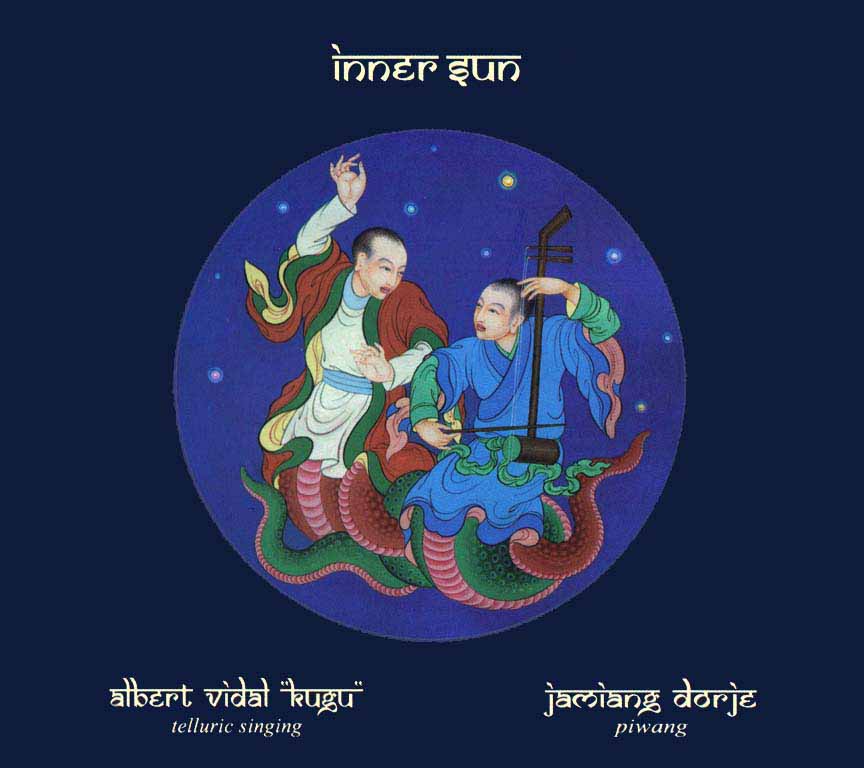
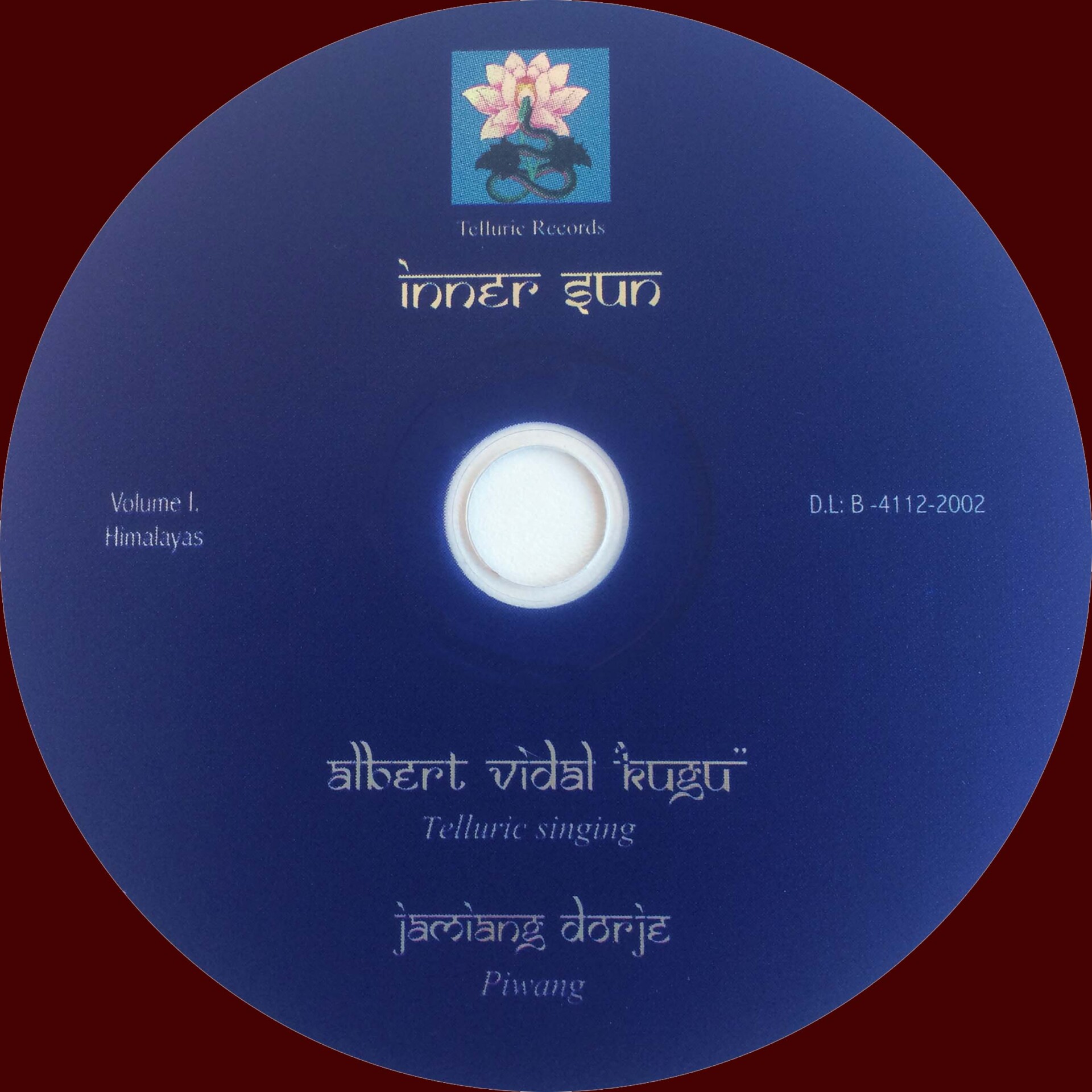
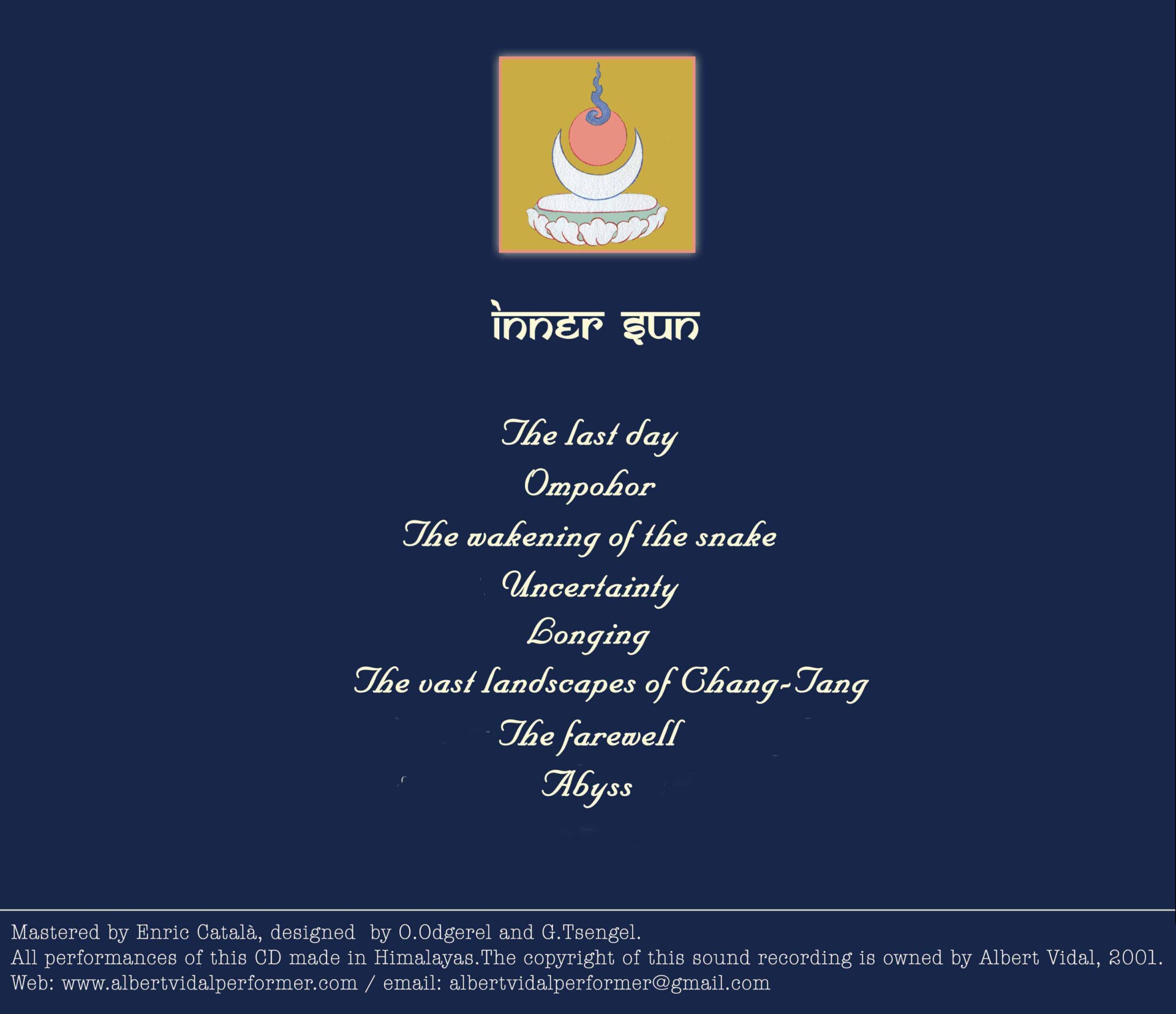
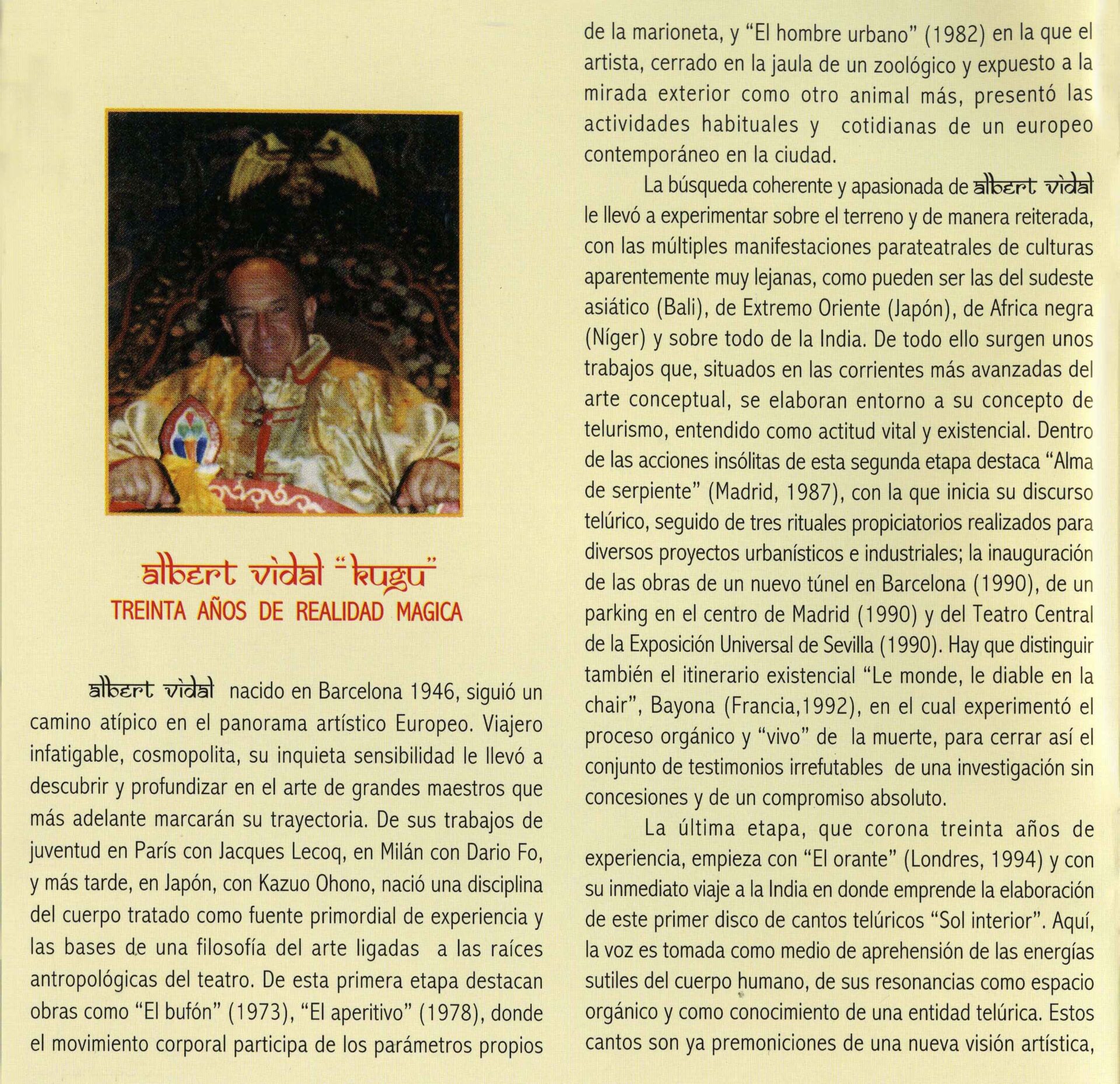
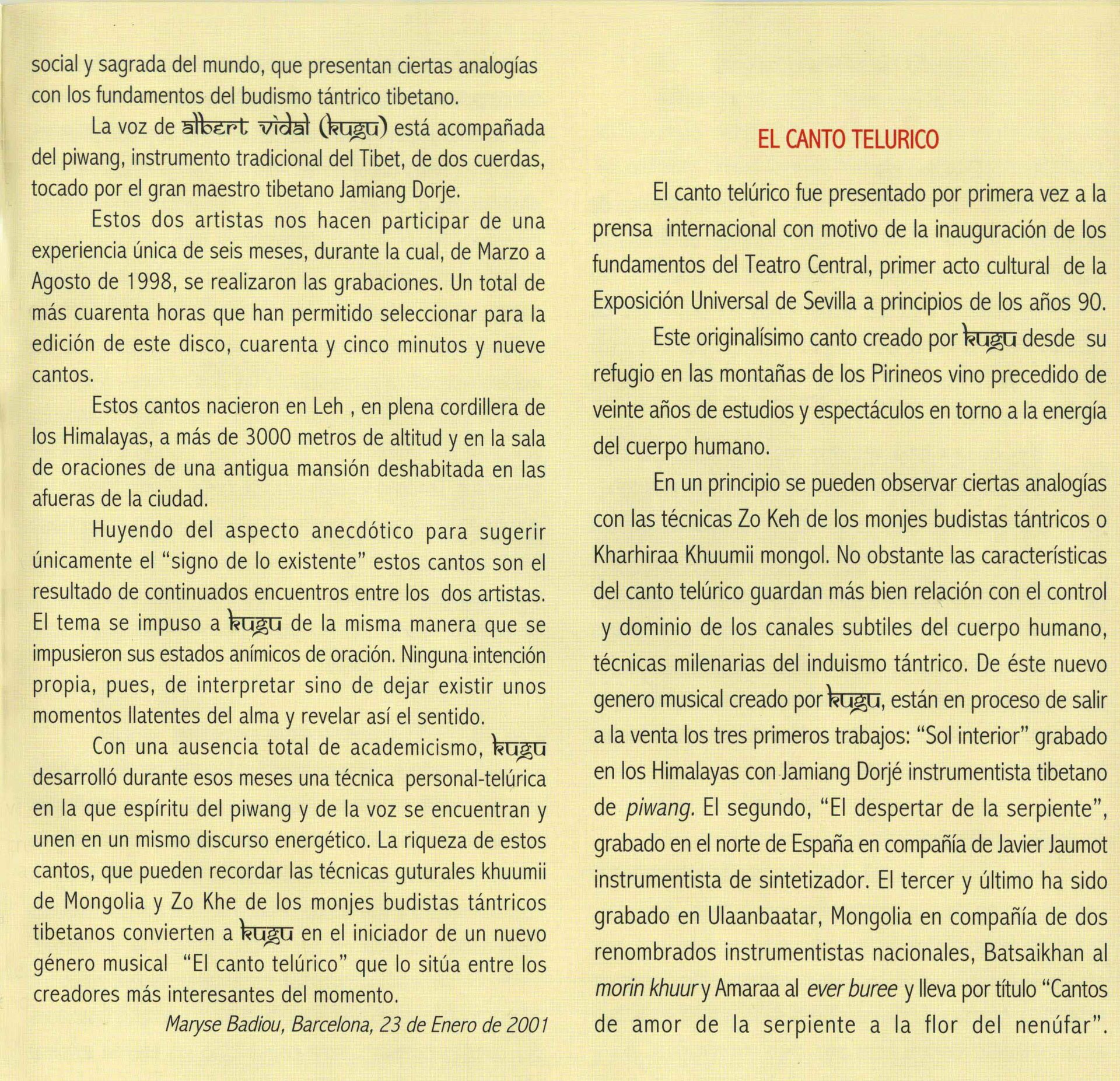
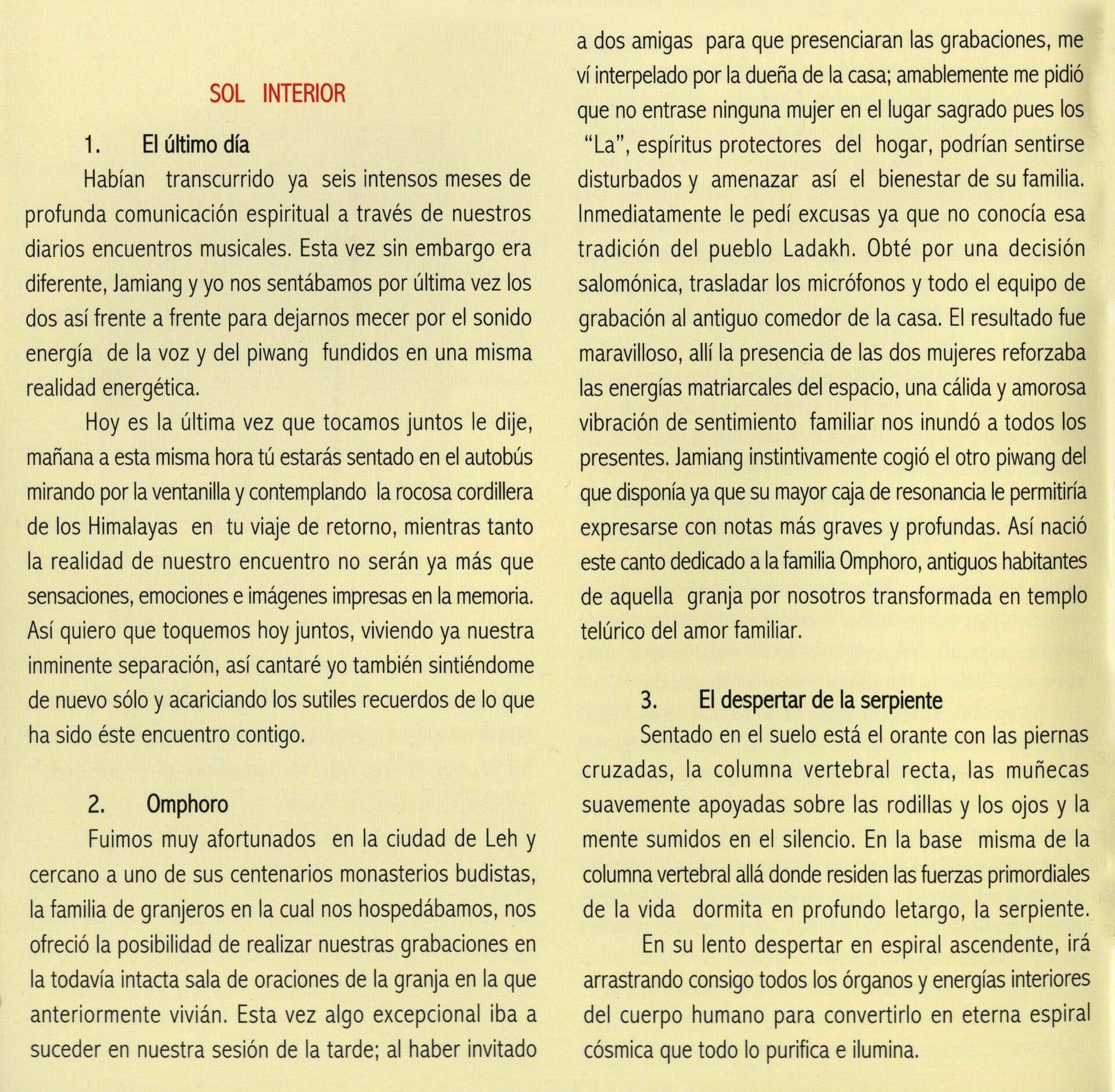
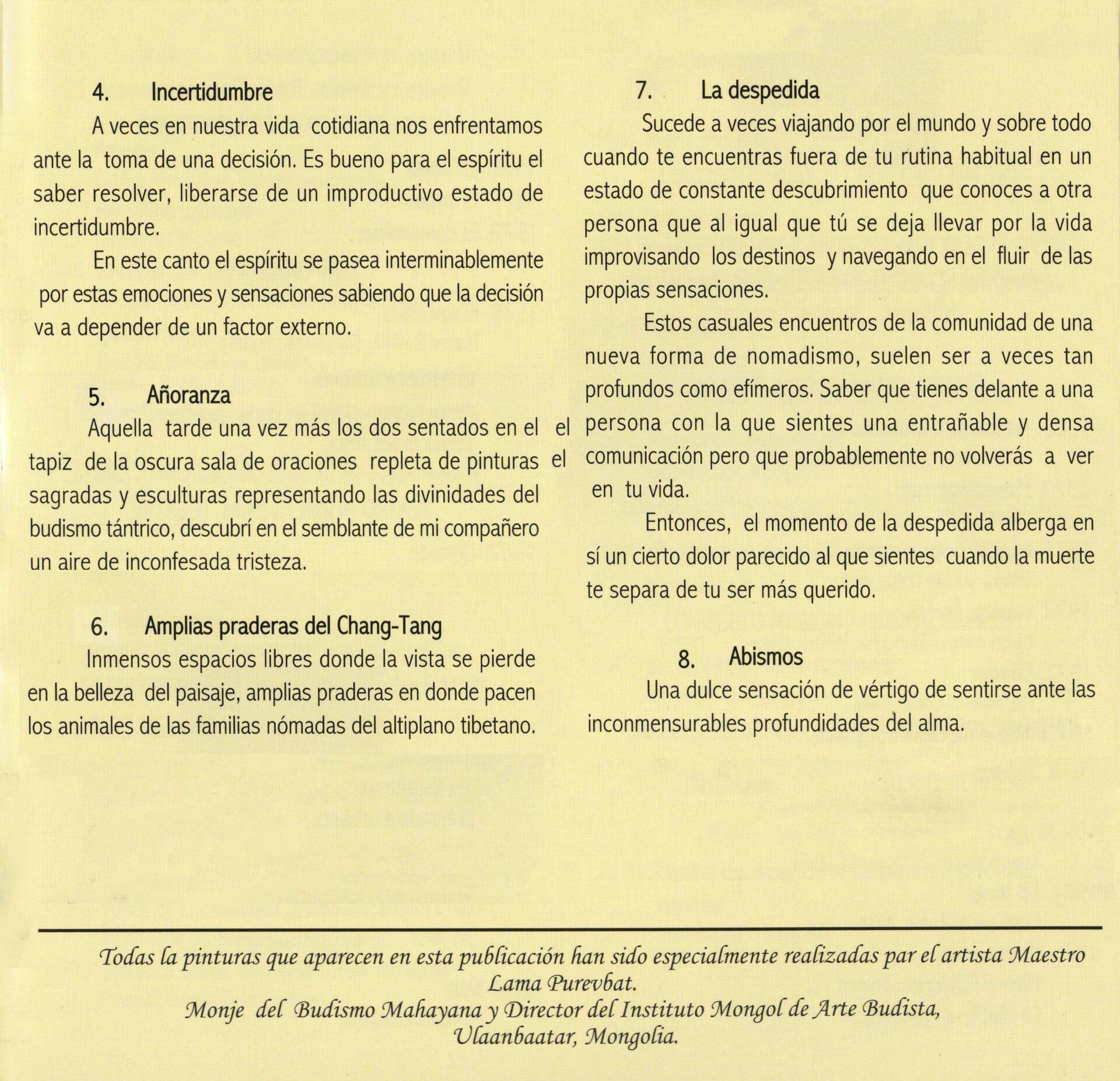
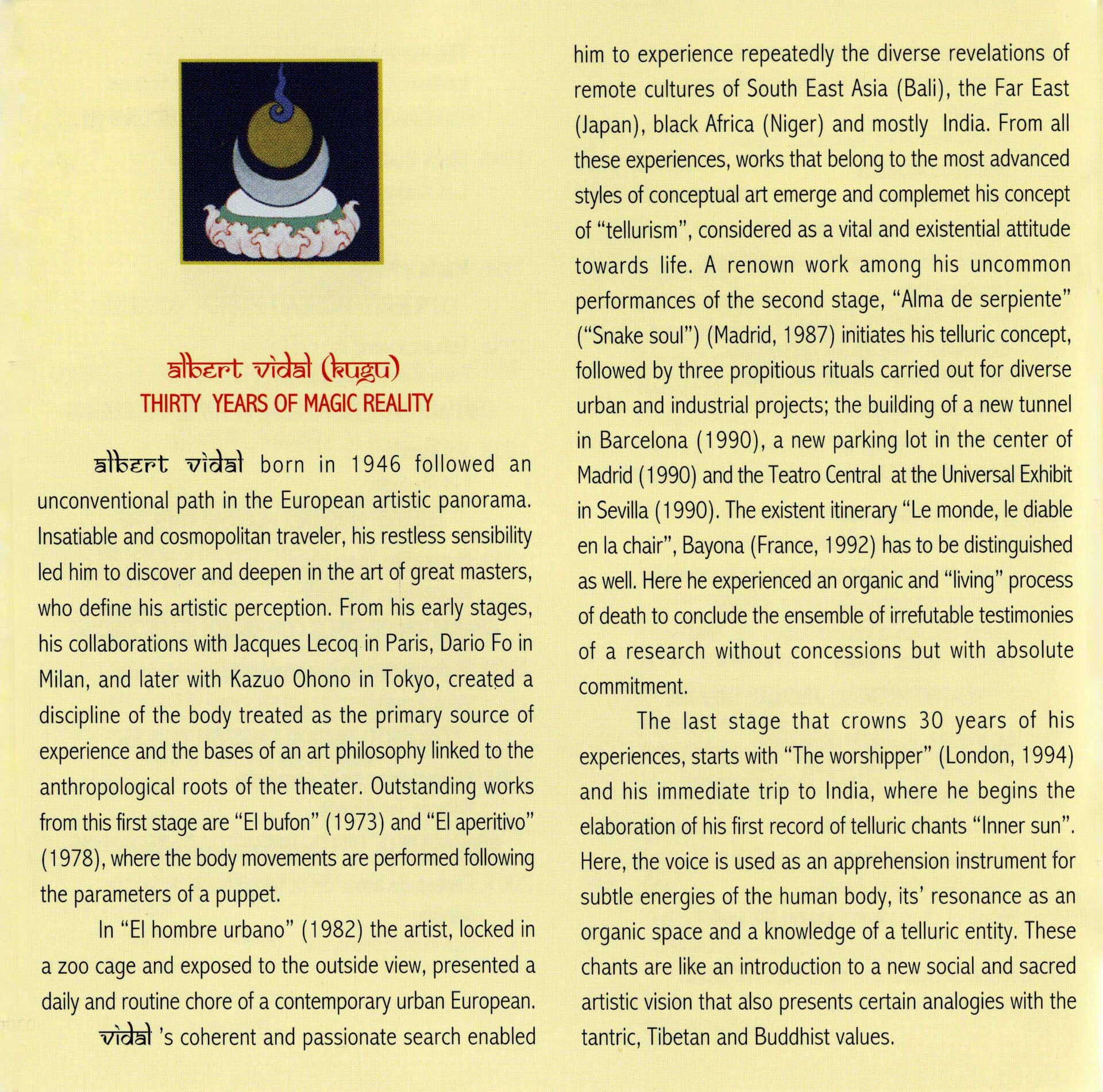
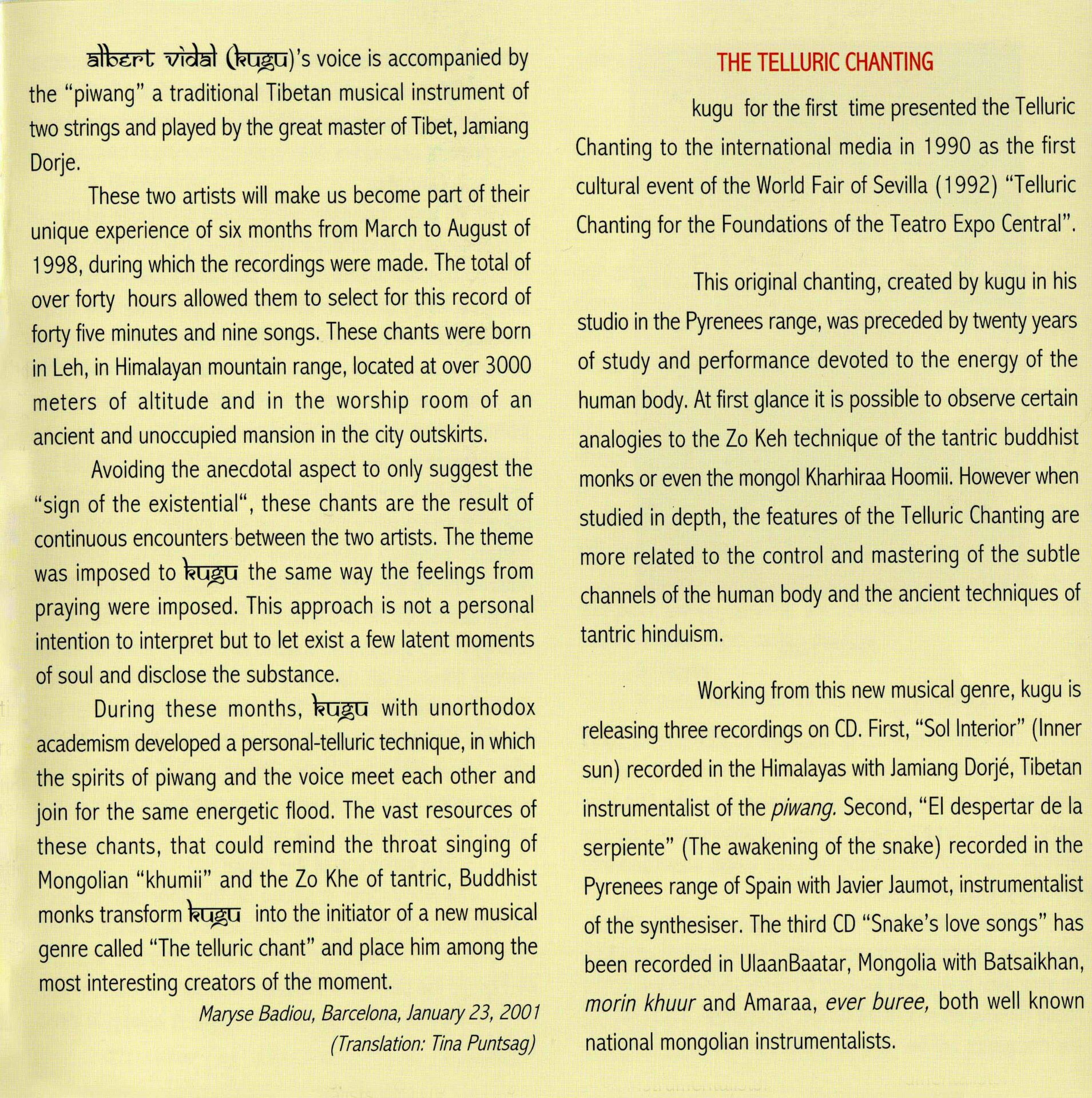
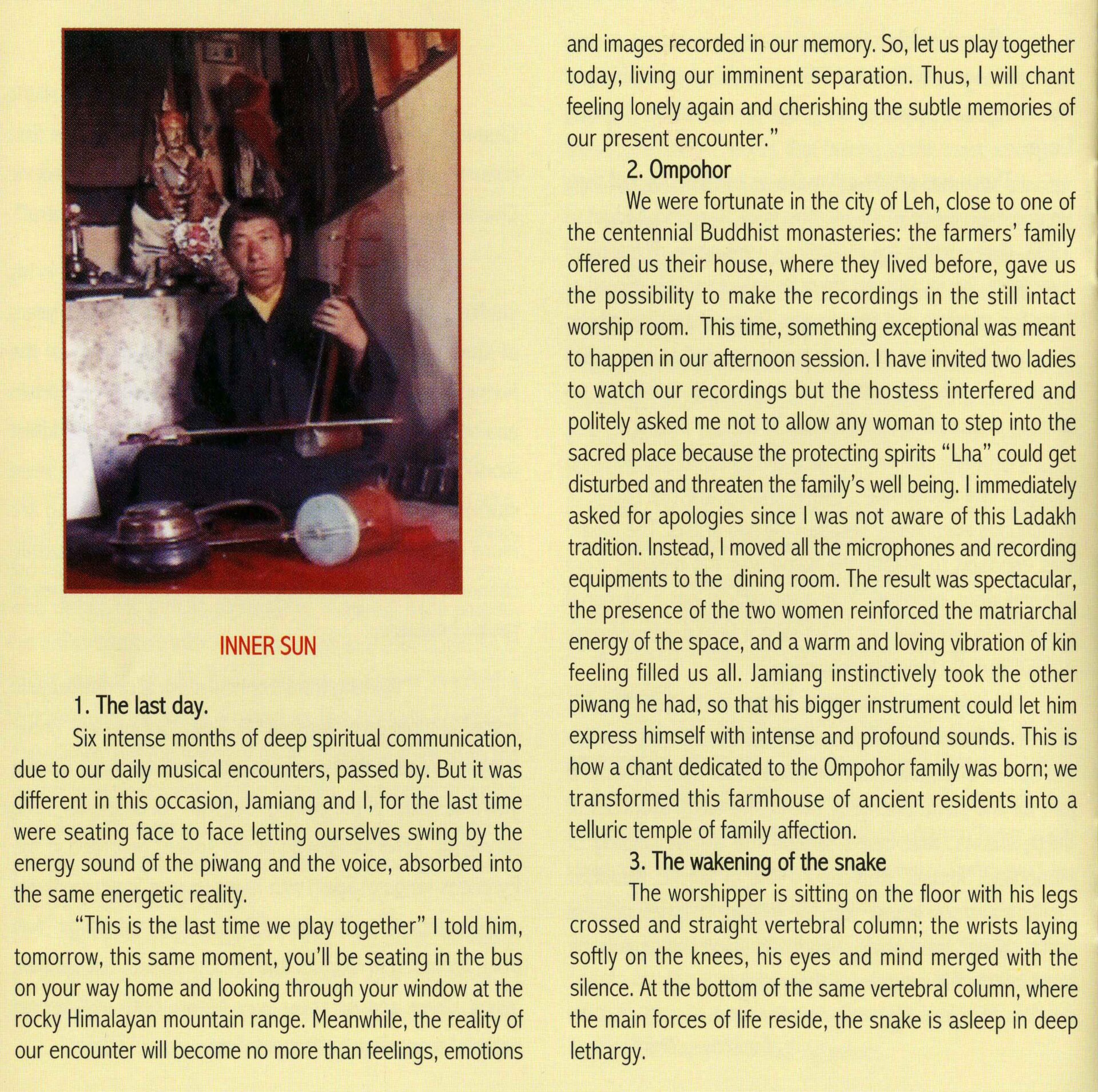
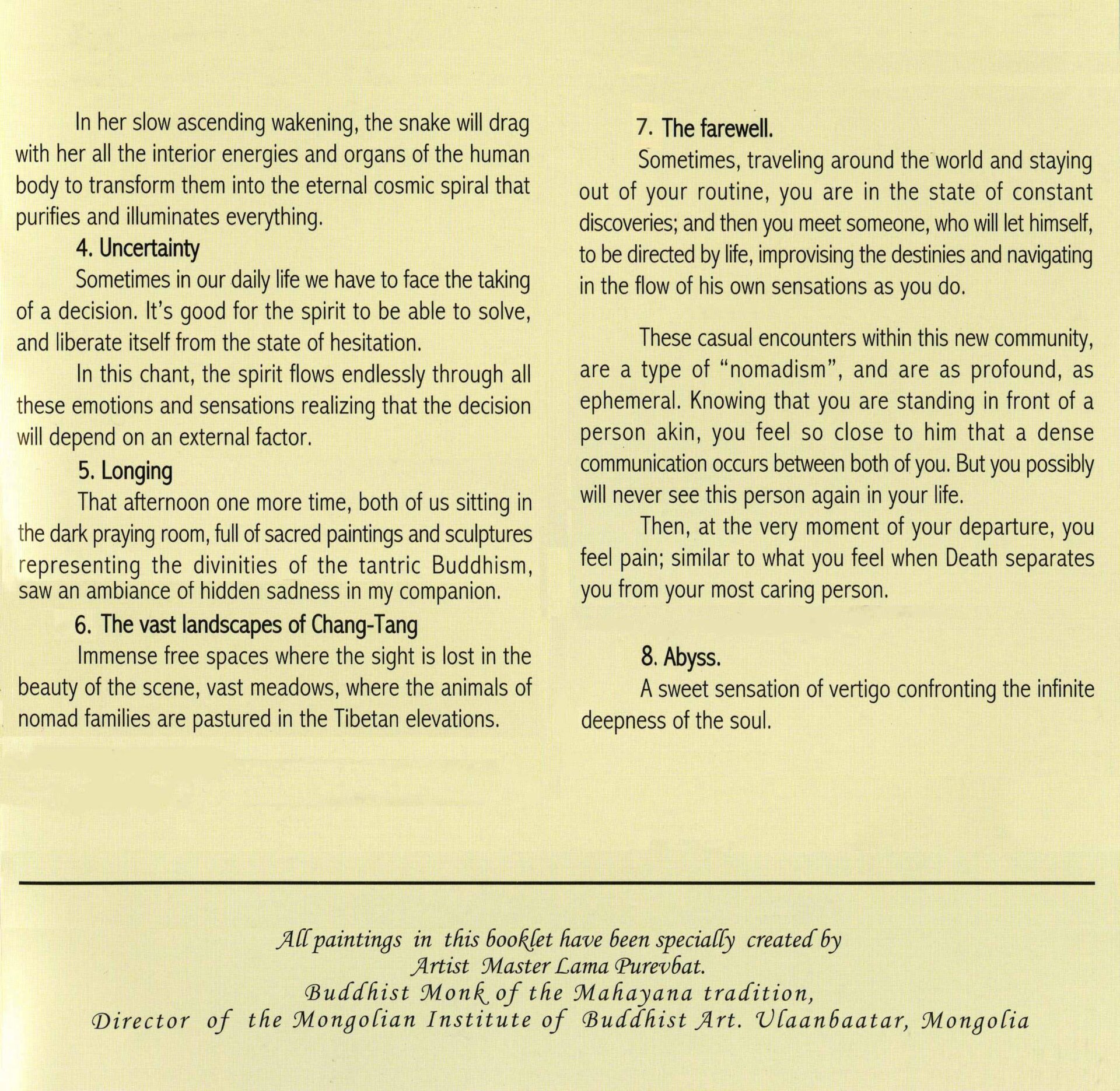
Chant 1. The last day
Six intense months of deep spiritual communication, due to our daily musical encounters, passed by. But it was different in this occasion, Jamiang and I, for the last time were seating face to face letting ourselves swing by the energy sound of the piwang and the voice, absorbed into the same energetic reality.
“This is the last time we play together” I told him, tomorrow, this same moment, you’ll be seating in the bus on your way home and looking through your window at the rocky Himalayan mountain range. Meanwhile, the reality of our encounter will become no more than feelings, emotions
and images recorded in our memory. So, let us play together today, living our imminent separation. Thus, I will chant feeling lonely again and cherishing the subtle memories of our present encounter.”
⇓
Chant 2. Ompohor
We were fortunate in the city of Leh, close to one of the centennial Buddhist monasteries: the farmers’ family offered us their house, where they lived before, gave us the possibility to make the recordings in the still intact worship room. This time, something exceptional was meant to happen in our afternoon session.
I have invited two ladies to watch our recordings but the hostess interfered and politely asked me not to allow any woman to step into the sacred place because the protecting spirits “Lha” could get disturbed and threaten the family’s well being. I immediately asked for apologies since I was not aware of this Ladakh tradition. Instead, I moved all the microphones and recording equipments to the dining room.
The result was spectacular, the presence of the two women reinforced the matriarchal energy of the space, and a warm and loving vibration of kin feeling filled us all. Jamiang instinctively took the other piwang he had, so that his bigger instrument could let him express himself with intense and profound sounds. This is how a chant dedicated to the Ompohor family was born; we transformed this farmhouse of ancient residents into a telluric temple of family affection.
⇓
Chant 3. The awakening of the snake
The worshipper is sitting on the floor with his legs crossed and straight vertebral column; the wrists laying softly on the knees, his eyes and mind merged with the silence. At the bottom of the same vertebral column, where the main forces of life reside, the snake is asleep in deep lethargy.
In her slow ascending wakening, the snake will drag with her all the interior energies and organs of the human body to transform them into the eternal cosmic spiral that purifies and illuminates everything.
⇓
Chant 4. Uncertainty
Sometimes our daily life we have to face the taking of a decision. It’s good for the spirit to be able to solve and liberate itself from the state of hesitation.
in this chant, the spirit flows endlessly through all these emotions ans sensations realizing that the decision will depend on an external factor.
Chant 5. The companion
A soft and tender feminine presence accompanies the aural and ethereal search of saint and hunter of souls of all existent. Wihtout this terrestrial, maternal and creative complement from the feminine companion, the digressions and discoveries of a spiritual man will be limited to just a tiny “seed”, but staying under the feminine shield, men will find the steady “fruit” that will allow life to continue expressing itself.
Chant 6. Longing
That afternoon one more time, both of us sitting in the dark praying room, full of sacred paintings and sculptures representing the divinities of the tantric Buddhism, saw an ambiance of hidden sadness in my companion.
⇓
Chant 7. The vast landscapes of Chang-Tang
Immense free spaces where the sight is lost in the beauty of the scene, vast meadows, where the animals of nomad families are pastured in the Tibetan elevations.
⇓
Chant 8. The farewell.
Sometimes, traveling around the world and staying out of your routine, you are in the state of constant discoveries; and then you meet someone, who will let himself, to be directed by life, improvising the destinies and navigating in the flow of his own sensations as you do.
These casual encounters within this new community, are a type of “nomadism”, and are as profound, as ephemeral. Knowing that you are standing in front of a person akin, you feel so close to him that a dense communication occurs between both of you. But you possibly will never see this person again in your life.
Then, at the very moment of your departure, you feel pain; similar to what you feel when Death separates you from your most caring person.
⇓
Chant 9. Abyss.
A sweet sensation of vertigo confronting the infinite deepness of the soul.
⇓
